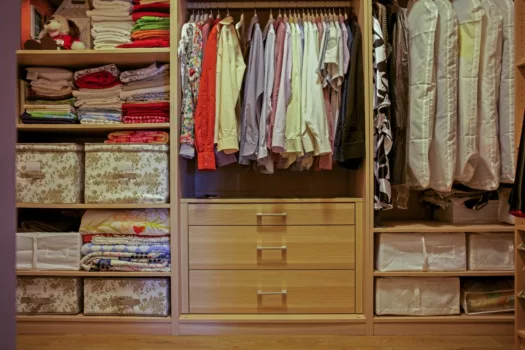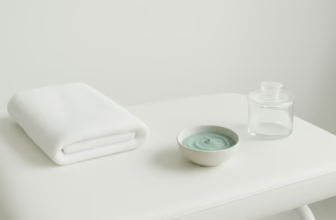Decorating your bedroom can be a fun way to express yourself, but if you have ADHD, it can also be a chance to create a space that helps you feel calm and focused. With the right design choices, your bedroom can become a personal retreat that supports your mental well-being and daily routines. From choosing the right colors to incorporating sensory-friendly elements, there are plenty of ways to make your space work for you. Here are some practical tips and ideas to help you transform your bedroom into a sanctuary tailored to your needs.
Key Takeaways
- Opt for calming colors and textures to create a soothing environment.
- Use open storage solutions to keep essentials visible and organized.
- Incorporate sensory-friendly decor to balance stimulation and relaxation.
- Personalize your space with items that reflect your interests and inspire creativity.
- Maximize small spaces by utilizing vertical storage and creating functional zones.
Creating a Calming Bedroom Environment
Choosing Soothing Colors and Textures
When it comes to designing a bedroom that feels like a haven, the colors and textures you choose can make all the difference. Opt for calming shades like soft blues, gentle greens, or warm earth tones. These colors are known to have a soothing effect on the mind, helping to reduce stress and promote relaxation. Textures also play a key role; consider incorporating soft, plush fabrics for bedding and curtains. A medium pile rug can add comfort underfoot without being too distracting. Remember, the goal is to create a space that feels both inviting and serene.
Incorporating Natural Elements
Bringing elements of nature into your bedroom can significantly enhance its calming atmosphere. Consider adding a few potted plants or a small indoor tree. Not only do they improve air quality, but they also provide a touch of tranquility. Even if you're not a plant person, a simple vase with fresh flowers can brighten up the room and your mood. A wooden nightstand or a stone sculpture can also add natural textures that contribute to a peaceful environment.
Using Lighting to Enhance Focus
Lighting can dramatically affect how we feel in a space. For an ADHD-friendly bedroom, it's important to have a mix of lighting options that cater to different needs. Soft, warm lighting can be perfect for winding down in the evening, while brighter, focused lighting may be necessary for tasks like reading or working. Consider using dimmable lights or smart bulbs that can be adjusted to suit your mood or activity. Additionally, natural light is a great mood booster, so keep those windows unobstructed during the day to let the sunlight in.
Creating a calming bedroom environment is all about balance. By thoughtfully selecting colors, textures, and lighting, you can design a space that not only looks good but also feels good. A tranquil bedroom can be a sanctuary from the chaos of daily life, offering a place to unwind and recharge.
Organizational Strategies for ADHD Bedrooms
Implementing Open Storage Solutions
When it comes to organizing a bedroom for someone with ADHD, open storage solutions can be a game-changer. The idea is simple: if you can see it, you can remember it. This means using shelves, hooks, and clear bins to keep items visible and accessible. Forget about those deep drawers where things disappear into the abyss. Instead, try floating shelves for books or hooks for bags and jackets. Not only does this make finding things easier, but it also reduces the stress of searching for misplaced items.
Designing Functional Zones
Creating specific zones in your bedroom can help keep things organized and focused. Divide your room into different areas like a sleeping zone, a work or study zone, and a relaxation zone. Use rugs or different paint colors to subtly mark these areas. This way, your brain can switch gears more easily when you move from one zone to another. It's like telling your mind, “Okay, now it's time to work,” or “Now it's time to relax.” This can be especially helpful for maintaining routine and focus.
Utilizing Multi-Purpose Furniture
In a bedroom designed for someone with ADHD, furniture should do more than just take up space. Think about multi-purpose pieces that can adapt to different needs. A bed with drawers underneath can store clothes or extra bedding. A desk that doubles as a vanity can save space and reduce clutter. By choosing furniture that serves multiple functions, you can keep your room tidy without sacrificing style or comfort.
Organizing a bedroom with ADHD in mind doesn't mean sacrificing style for function. It's about finding a balance that works for you, making your space both inviting and practical. The goal is to create an environment where you can thrive, surrounded by the things you love and need.
Incorporating Sensory-Friendly Decor
Selecting Stimulating Patterns and Textures
Decorating a sensory-friendly space for ADHD doesn't mean you have to sacrifice style for function. Finding the right patterns and textures can be a game-changer. Look for rugs or cushions with patterns that catch your eye but don't overwhelm. A checkered rug or one with subtle geometric designs can provide just the right amount of visual interest without being too distracting. Medium pile rugs often offer a good balance between comfort and sensory stimulation. Earth tones are a great choice for colors—they're calming yet visually engaging.
Balancing Visual and Tactile Elements
Creating a sensory-friendly space is all about balance. You want to make sure that your room isn't too visually cluttered while still offering tactile experiences. Try incorporating different materials like smooth wood, soft fabrics, and cool metals. This mix can provide a rich sensory experience without overwhelming the senses. When choosing decor, think about how each piece feels as well as how it looks. A velvet throw or a wooden coffee table can add both visual and tactile appeal.
Creating a Sensory Retreat
Your home should be a place where you can unwind and recharge. Creating a sensory retreat can help you achieve this. Start by setting up a corner of your room with items that bring you peace. This could include a comfy chair, a soft blanket, and perhaps a few scented candles or a small speaker for calming music. It's important to have a space where you can escape the hustle and bustle of daily life and just relax. Consider incorporating subtle color accents like pastel pillows or artwork to maintain a calm atmosphere while keeping the space lively.
Personalizing Your Space with Purpose
Reflecting Personal Interests in Decor
Decorating your space is more than just making it look nice; it's about making it yours. Start by reflecting your personal interests in your decor. Love music? Hang your favorite vinyl records on the wall. Into sports? Display a shelf with memorabilia from games you've attended. Your space should tell your story. It's a daily reminder of what you love and who you are.
Using Art and Memorabilia for Inspiration
Art can be a powerful source of inspiration. Choose pieces that motivate and energize you. Maybe it's a vibrant painting that lifts your spirits or a photograph that captures a cherished memory. Memorabilia, like a signed poster or a vintage postcard, can also serve as a creative spark. Position these items where you'll see them often, like above your desk or near your reading nook.
If you're looking for affordable and inspiring ADHD-themed wall art, Society6 offers a variety of posters and wall frames that can perfectly complement your personalized space. Check out Society6 with this promo code to find designs that match your interests while saving money.
Creating a Space That Encourages Creativity
To foster creativity, design a space that feels inviting and stimulating. Consider setting up a dedicated area for your hobbies—perhaps a corner with a cozy chair for reading or a desk for crafting. Keep this area free of distractions and clutter so your mind can wander freely. A small table with art supplies or a journal can encourage spontaneous bursts of creativity. Remember, the goal is to create a space that feels like a playground for your mind.
Maximizing Functionality in Small Spaces
Optimizing Layout for Daily Routines
Living in a small space means you have to be smart about how you organize your stuff. It's all about making sure every inch counts. Arranging furniture in a way that matches your daily routine can really help. For example, if you like to read before bed, make sure your favorite chair and a good lamp are nearby. Try to keep pathways clear so you don't trip over anything when you're half asleep.
Utilizing Vertical Space Effectively
When floor space is limited, think up! Vertical storage is your best friend. Install shelves or hooks on walls to store items you don't use every day. This keeps your stuff off the floor and makes your room feel less cluttered. Consider using tall bookcases or stacking storage boxes. It's like having extra closets without taking up more room.
Creating Dedicated Work and Relaxation Areas
In a small space, it's important to have zones for different activities. Even if it's just a corner, set up a spot for work with a desk and good lighting. For relaxation, maybe a comfy chair or a small sofa with some throw pillows. Keeping these areas separate helps your brain switch between work and chill mode. This is especially helpful if you have ADHD, as it can make focusing on tasks a bit easier.
Maintaining a Clutter-Free Environment
Establishing Daily Cleaning Habits
Keeping a tidy space doesn't have to be a massive chore. For those with ADHD, the trick is to break it down into small, regular tasks. Start by setting aside a few minutes each day to tackle specific areas. Whether it's making your bed in the morning or doing a quick sweep of the living room at night, these small actions add up. You could even set reminders on your phone to help build these habits.
Using Stylish Storage Solutions
Storage doesn't have to be dull. Incorporate stylish bins and baskets to keep things organized while adding a touch of flair to your space. Consider open shelving to keep items visible and accessible, which is particularly helpful for those with ADHD. Floating shelves can also be a great way to display items you use frequently, keeping them at the forefront of your mind.
Creating a System for Managing Clutter
A solid system for managing clutter is essential. Think about what you use daily and ensure those items have a designated spot. Group similar items together. For instance, keep all your electronics in one area, and books in another. Labeling can help too, especially for items stored in bins or drawers. This approach not only keeps things organized but also minimizes the time spent searching for misplaced items.
“Clutter is not just about the mess; it's about how it affects your ability to focus and feel comfortable in your own space. Creating systems that work for you can make a huge difference.”
For more strategies on organizing with ADHD, check out these essential strategies for decluttering.
Designing a Bedroom That Supports Mental Well-Being
Incorporating Relaxation Zones
Creating a bedroom that promotes mental well-being starts with designating specific areas for relaxation. Think of your bedroom like a mini sanctuary where you can unwind after a long day. Consider setting up a cozy reading nook with a comfortable chair and a soft throw blanket. A small table for your favorite books and a lamp with adjustable brightness can make this space inviting. If you're into meditation or yoga, carve out a corner with a mat and perhaps some cushions. These zones help signal to your brain that it's time to relax and recharge.
Using Calming Scents and Sounds
Incorporating scents and sounds can greatly enhance the calming atmosphere of your bedroom. Essential oils like lavender, chamomile, or eucalyptus can be diffused to create a soothing environment. You might want to invest in a small diffuser or even scented candles. Pair these with ambient sounds, like nature noises or gentle music, to further promote relaxation. A white noise machine or a simple playlist on your phone can do wonders for drowning out distractions and helping you focus on rest.
Creating a Sleep-Friendly Atmosphere
A sleep-friendly environment is essential for good mental health. Quality sleep can significantly improve mood and cognitive function. Start by choosing blackout curtains to keep your room dark and cool, which is ideal for sleep. Keep the bedroom free of electronic devices as much as possible to minimize distractions. If you need a clock, opt for one with a dim display. Comfortable bedding is also crucial; invest in a good mattress and pillows that support your sleep posture.
Conclusion
In the end, making your space work for you is all about understanding what you need to feel comfortable and focused. Whether it's using open shelves to keep things in sight or setting up specific zones for different activities, the key is to create an environment that supports your unique way of thinking. Remember, it's not about following trends or making your home look like a magazine spread. It's about finding what works for you and embracing it. So, take these tips, experiment a little, and make your home a place where you can truly thrive.
Frequently Asked Questions
How can I make my bedroom calming for ADHD?
Use soft colors like blues and greens, add natural things like plants, and have lights that help you focus.
What are some organization tips for ADHD bedrooms?
Try open shelves so you can see everything, make different areas for different things, and use furniture that can do more than one thing.
How do I add sensory-friendly decor to my room?
Pick patterns and textures that feel good, balance things you see and touch, and make a cozy corner for relaxing.
How can I personalize my space with purpose?
Decorate with things you love, use art and keepsakes for inspiration, and create a space that makes you feel creative.
What are ways to maximize small spaces for ADHD?
Arrange your room to match your daily habits, use tall shelves to save space, and have areas for work and rest.
How do I keep my room clutter-free?
Clean up a little every day, use nice-looking storage, and have a plan for where everything goes.
Follow me down the rabbit hole!
I'm Alice and I live with a dizzying assortment of invisible disabilities, including ADHD and fibromyalgia. I write to raise awareness and end the stigma surrounding mental and chronic illnesses of all kinds.








